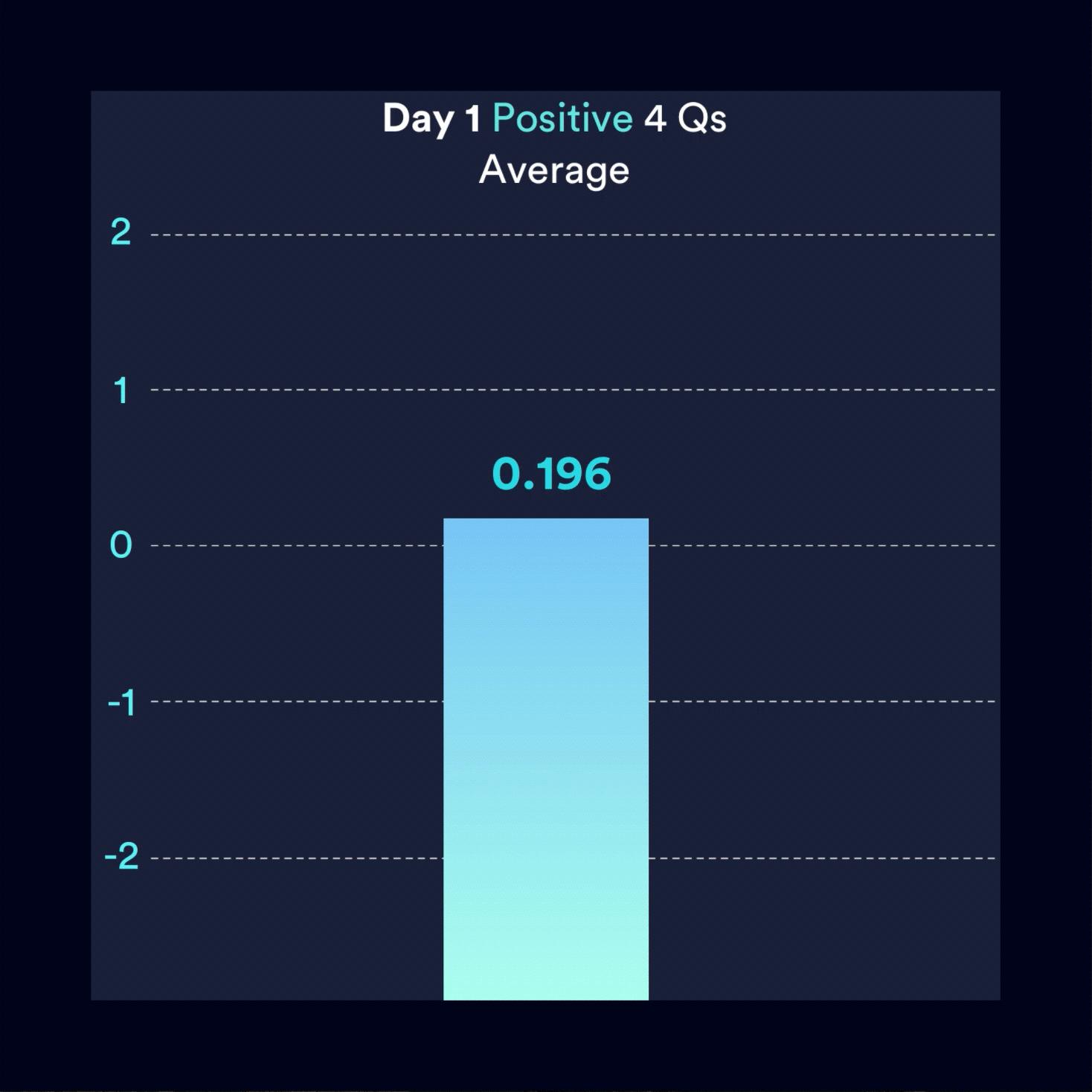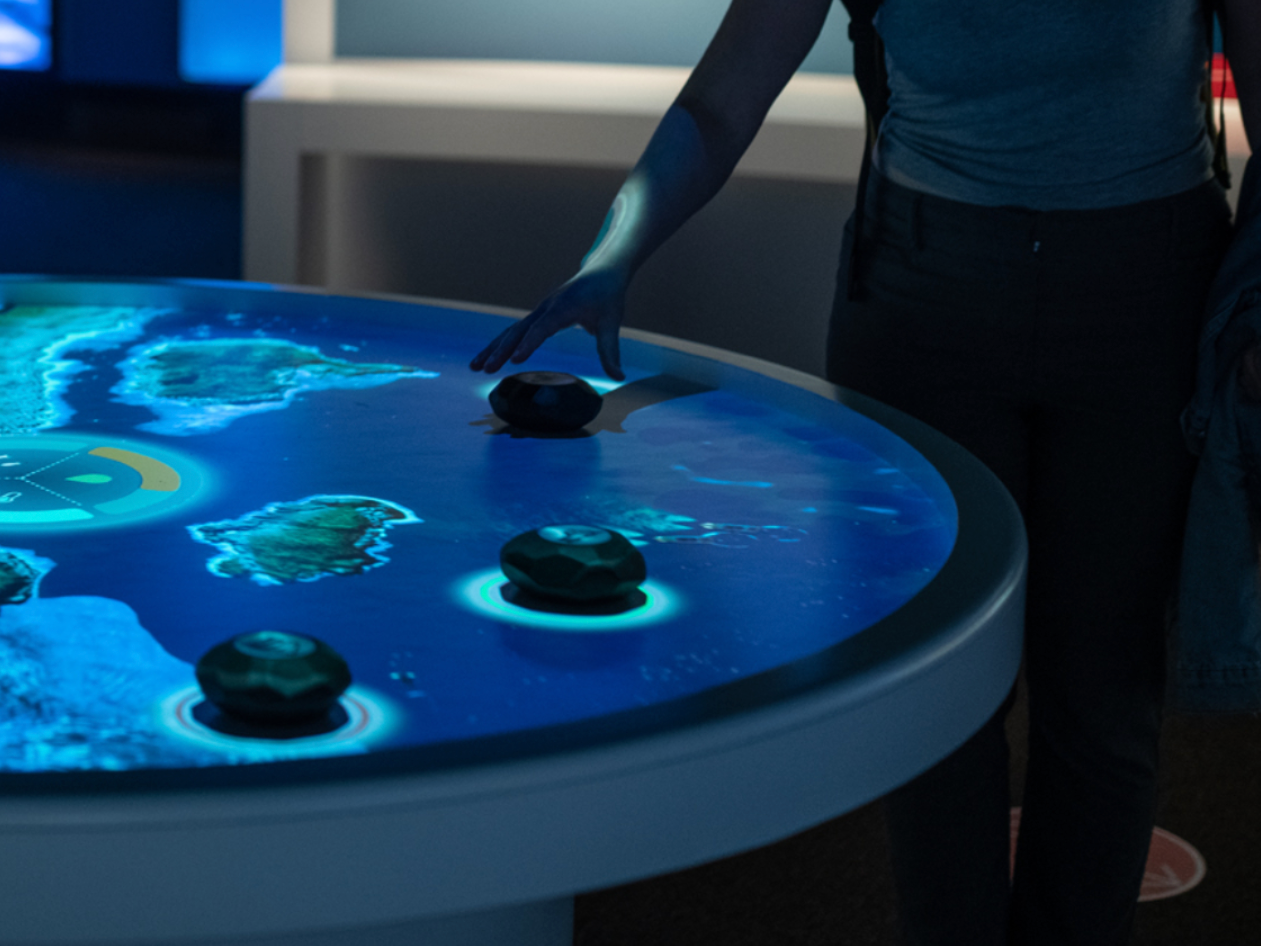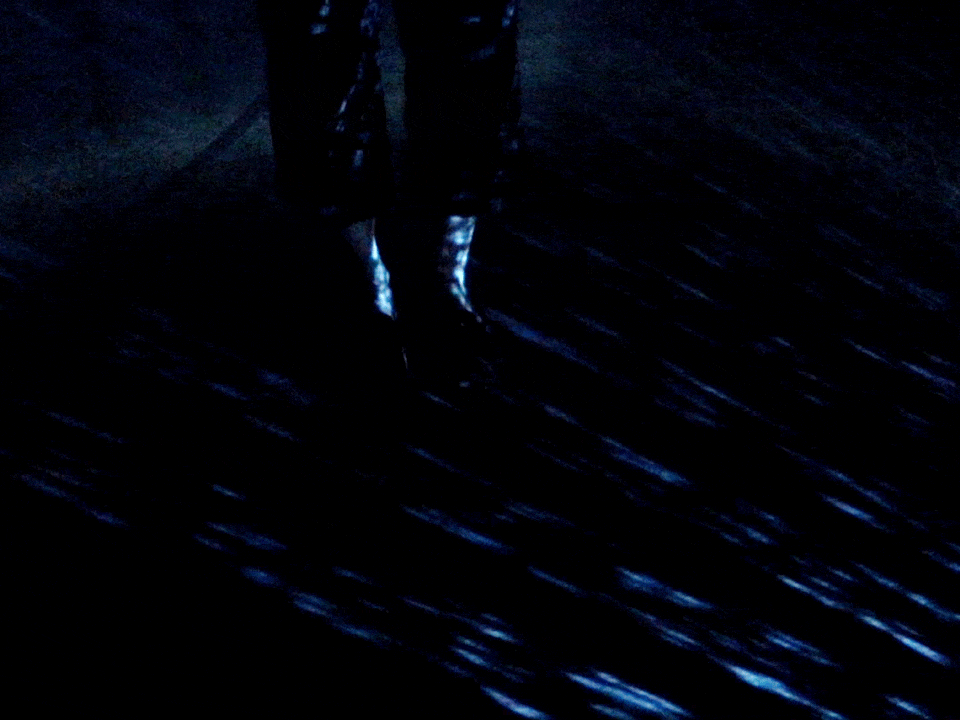Intro - StarSpace (2018). Michelle Yao & Jimmz Zhang
Timeline & My Role
3 weeks | Oct 2018
Individual Project & Collaboration | Jimmz Zhang (Audio-reactive Aurora)
Michelle Yao (Star Footage, Sound Remixing, Design)
Yi Bie (Photographer)
Featured Show | Emily Carr University of Art + Design Thesis Project
I. Ideation
Has been working and studying as a designer for most of my career so far, I started to think about the things I love - interactivity and immersion in the digital art can do to a particular experience design case.
Briefly worked with a startup, to:Resonate in BC this Fall, I decided to conduct a research project on how the tangible, embodied interactive space could contribute to user's meditation experience. To other words, comparing to a traditional or usual way they practice meditation, is this going to make their experience more successful?
I started to draft some sketches of the installation. The overall visual design principle is to create an infinite space allowing the mind to swim freely, and the interaction should be subtle and mild, without distracting the audience through their meditation experience.
Sketch on Paper - Star & Aurora

DIGITAL SKETCH 1
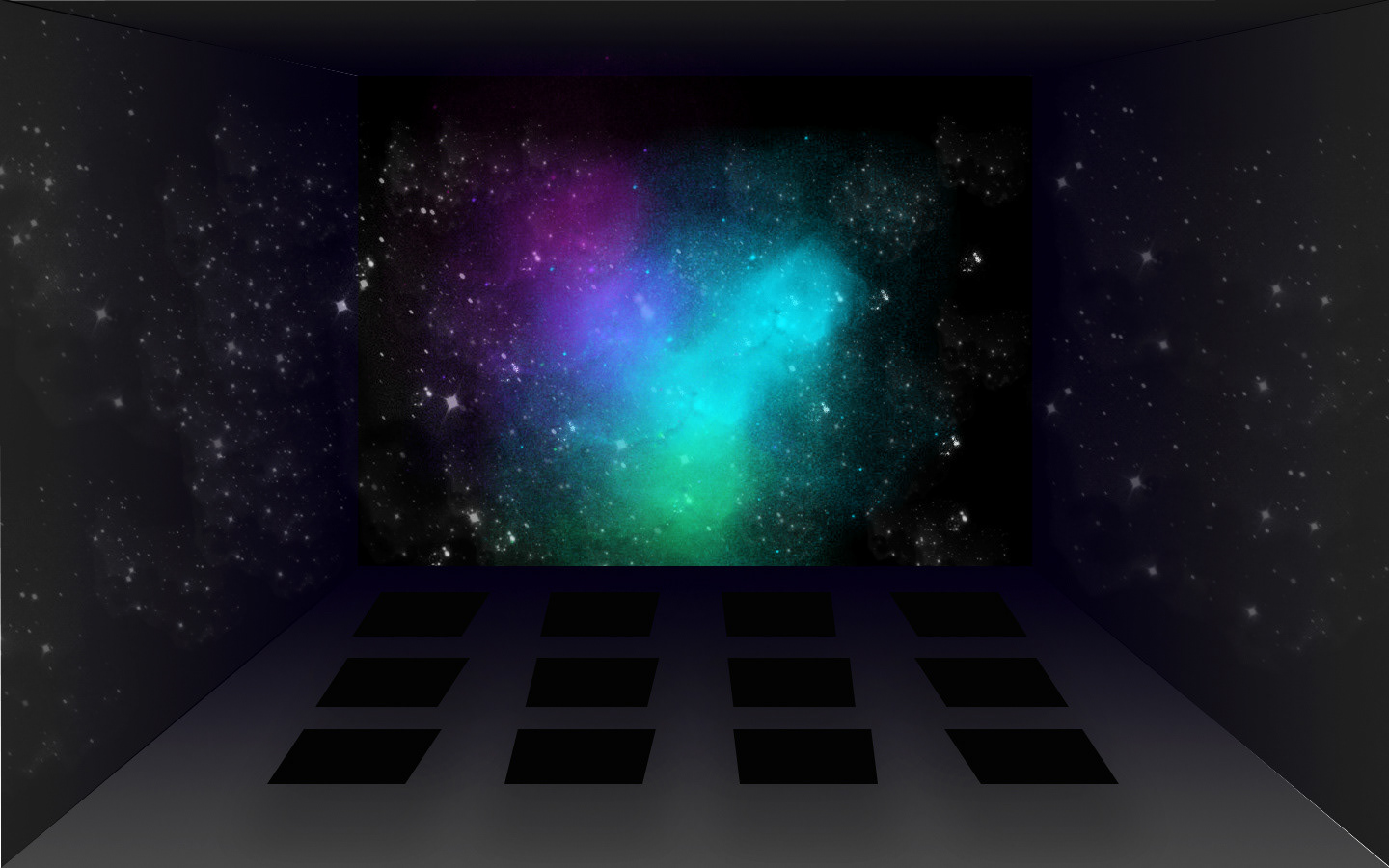
DIGITAL SKETCH 2
II. Design Research - Design Probe
When we want to research whether the elements of immersion and interactivity could contribute to a meditation experience, we decided that we should have a Comparative Group. The key principle of conducting Comparative Group research is to control the variables (in this case, the activity we want users to do should be the same - meditation).
The Design Probe - Each Participant will receive a probe containing 3 envelopes (for 2days before the installation showcase and one during the day for the showcase). Each day participants will be asked to do a series of activity according to the instruction they receive in the envelope.
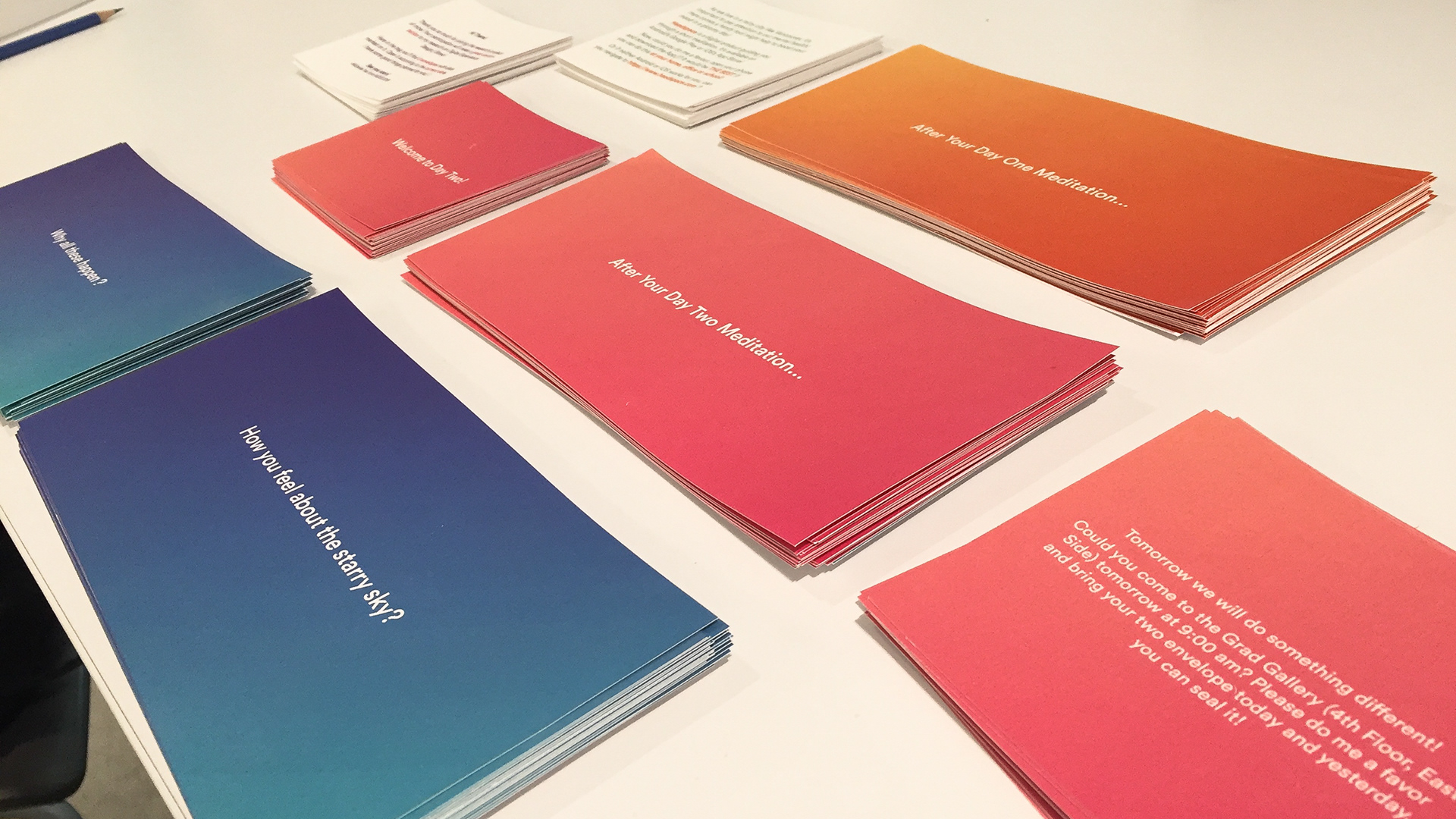
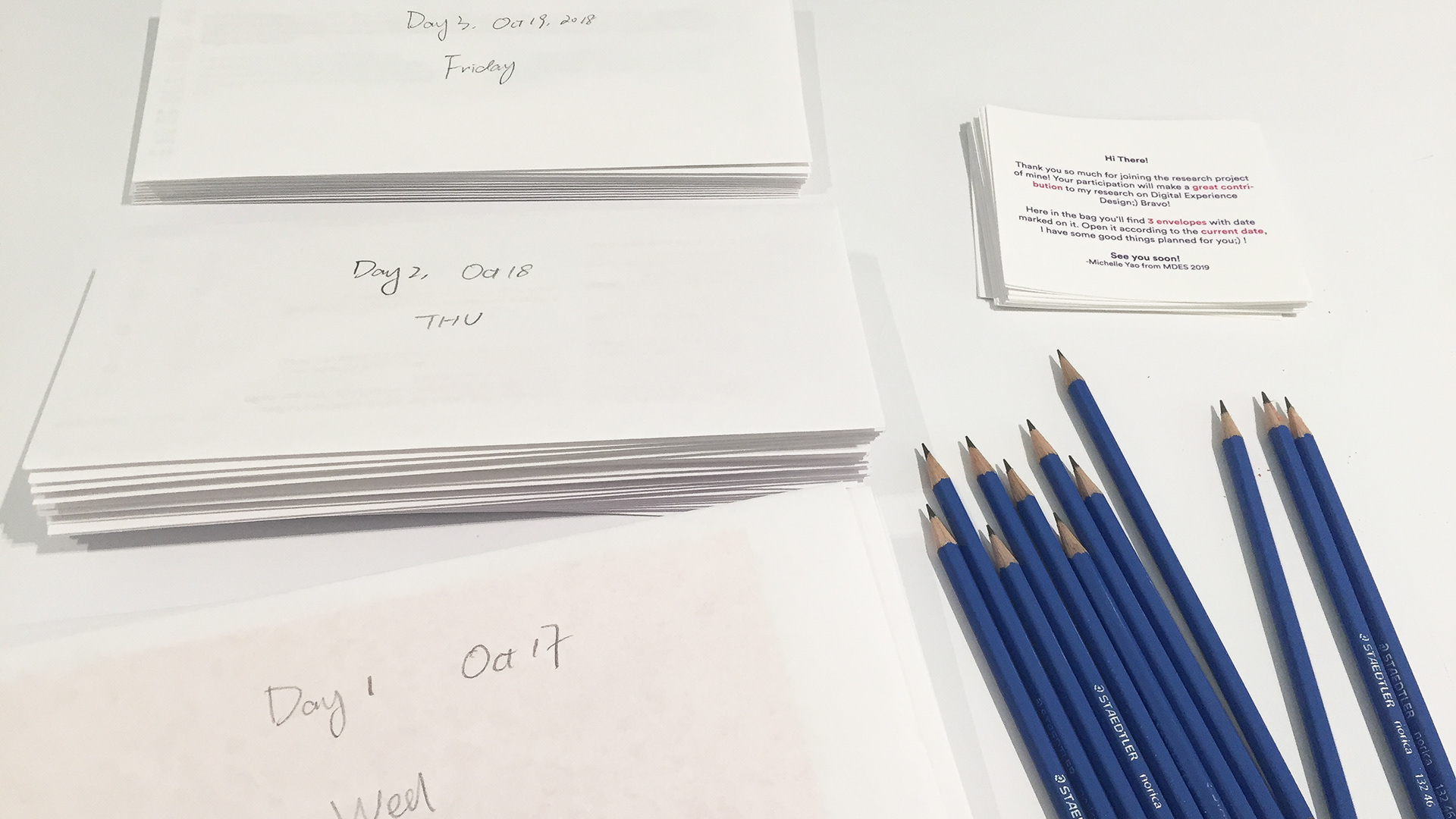
The Info Card - Besides the 3 envelopes, each participant will get a info card, explaining why they are doing this probe, and how the probe could contribute to this research project.
DAY 1
I chose Headspace as the Comparative Group activity. Why? Since meditation is an activity needs practice and lead by a professional, Headspace would be a perfect tool letting people practice mindfulness without the constrains of location and time, also they can get proper guidance.
For each day, the participant is asked to practice mindfulness via Headspace (using Headspace App the first two days, and experience in the installation space in the third day).
After each session they finish, they will fill out a questionnaire, where there' are 8 questions describing the experience. The first 4 is positive, while the other 4 is negative. The intention of designing this coz it's the most sufficient way to gather objective info from participants, try to avoiding bias using both positive and negative descriptions (Universal Method of Design).
DAY2
On the second day, each participant is asked to continue their meditation practice on Headspace. But this time it would be a longer time experience (10 min).
After finishing the mindfulness practice, each participant is asked to rate their feeling as the same as the first day. The intention is to discover their feeling change throughout the process.
Survey / Questionnaire
The last card of Day 2 provides participants some hint for the installation showcase event (time and location).
Also, for the purpose of collecting feedback and know more about user needs, I carried out a little open-ended questions allowing each participant to fill out.
DAY3
The third day is the installation showcase day! With the same soundtrack in Headspace's Day 3 meditation, I remixed it with natural sound (birds & water), also with two different instrumental soundtrack to keep the performance/experience continuous and fluid.
III. Showcase!


IV. Data & Conclusion
In total: 14 Effective Probes
After collecting all the probes and feedback, I started to interpret the raw data.
Method: From the questionnaire, I handed out during those three days, there are 4 positive descriptions and 4 negative ones. Each question is rated by participant from "Totally Disagree" to "Totally Agree" . The way I interpret all the data is to turn this verbal description into number from :
In this case, if the score for the first 4 questions (positive description) is closer to 2, it means it has positive feedback.
Conversely, for the other 4 questions (negative description), if it's closer to number -2, it means it has a positive impact as well.
-2 (Totally Disagree) -1 (Disagree) 0 (I don't Know) 1 (Agree) 2 (Totally Agree)
Quantitative
The goal of my research is to see the trend of each participant's feedback changing between those two experiences. So I made a line chart tracking the changes of 14 of them.
(Chart Coming Soon)
Qualitative
The overall goal of this research is to see whether this medium can make a positive impact on health and well-being related experiences. So I calculated all the average for 14 participants on their first 4 questions (positive description) and other 4 questions (negative description) on those 3 days respectively.
From those two animated charts, we can see an overall POSITIVE trend in both cases!
Overall Avg. Positive 4 questions Day 1: 0.196
Overall Avg. Positive 4 questions Day 2: 0.212
Overall Avg. Positive 4 questions Day 3: 0.500
Overall Avg. Positive 4 questions Day 2: 0.212
Overall Avg. Positive 4 questions Day 3: 0.500
Overall Avg. Negative 4 questions Day 1: 0.714
Overall Avg. Negative 4 questions Day 2: 0.846
Overall Avg. Negative 4 questions Day 2: 0.846
Overall Avg. Negative 4 questions Day 3: -1.038
